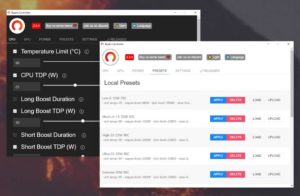
Sub-timings are complicated, but AnandTech posted a big analysis on this in 2010. For daily overclocking, DDR4 is quite reasonable in that most memory kits have roughly the same sub-timings, but differ more in frequency, and it is easier to adjust the frequency. Memory comes with two main parameters: frequency and sub-timings. However these high-speed memory kits are often very expensive. As long as the memory controller in the processor can handle the memory, all is well. Users can then install the kit, and use the BIOS to apply the memory profile (because high speed kits are not enabled automatically). Memory manufacturers sell memory faster than this, and the easiest way to 'overclock' the APU is by buying a memory kit that has a high speed.

The memory controllers of the Ryzen APUs are rated to DDR4-2933 out of the box, meaning that with verified memory, the system should happily run at this speed under 'JEDEC' sub-timings (JEDEC being the standard). Either one can present a limit to overclocking, and it can be difficult to diagnose which on is a limit without testing with either a different memory kit or a different CPU. The performance of the memory overclock is dependent on two things: the capability of the memory controller in the processor, and the capability of the memory itself. At this point, it would be prudent to select the 39x multiplier for more of a 24/7 daily system, which for the Ryzen 3 2200G is a reasonable core overclock, especially as we test will all CPU cores at this frequency. This hard limit means that a lot of voltage is required just to move up one on the frequency ratio - we can see here that the jump from 39x to 40x required six more stops on the voltage curve.

The last fail at the end was due to temperature - the Ryzen family of processors, due to the manufacturing process, seem to have a distinct hard limit on CPU frequency. Repeat until the stress tests hit a thermal limit.Īs a result, we get this nice graph when it comes to testing: If the system is not stable, then add +0.025 volts to the CPU, and retest.


If the CPU is stable, raise the ratio by one, and retest stability. Now the CPU testing rises up like a staircase. This gives us a floor frequency of 3.0 GHz to start with, and we get a stable voltage and work up from there. At 3.0 GHz, we adjust the CPU voltage to find the lowest setting that remains stable for our testing. The APUs have a 'base frequency' of 100 MHz, and to get the final frequency, the CPU ratio acts like a multiplier (it is often called the CPU multiplier as well). For our testing, to show some underclocking as well as overclocking, we start with a CPU ratio of 30x on all cores. Buy AMD Ryzen 5 2400G on Overclocking the CPUįirstly, we adjust the CPU ratio.


 0 kommentar(er)
0 kommentar(er)
